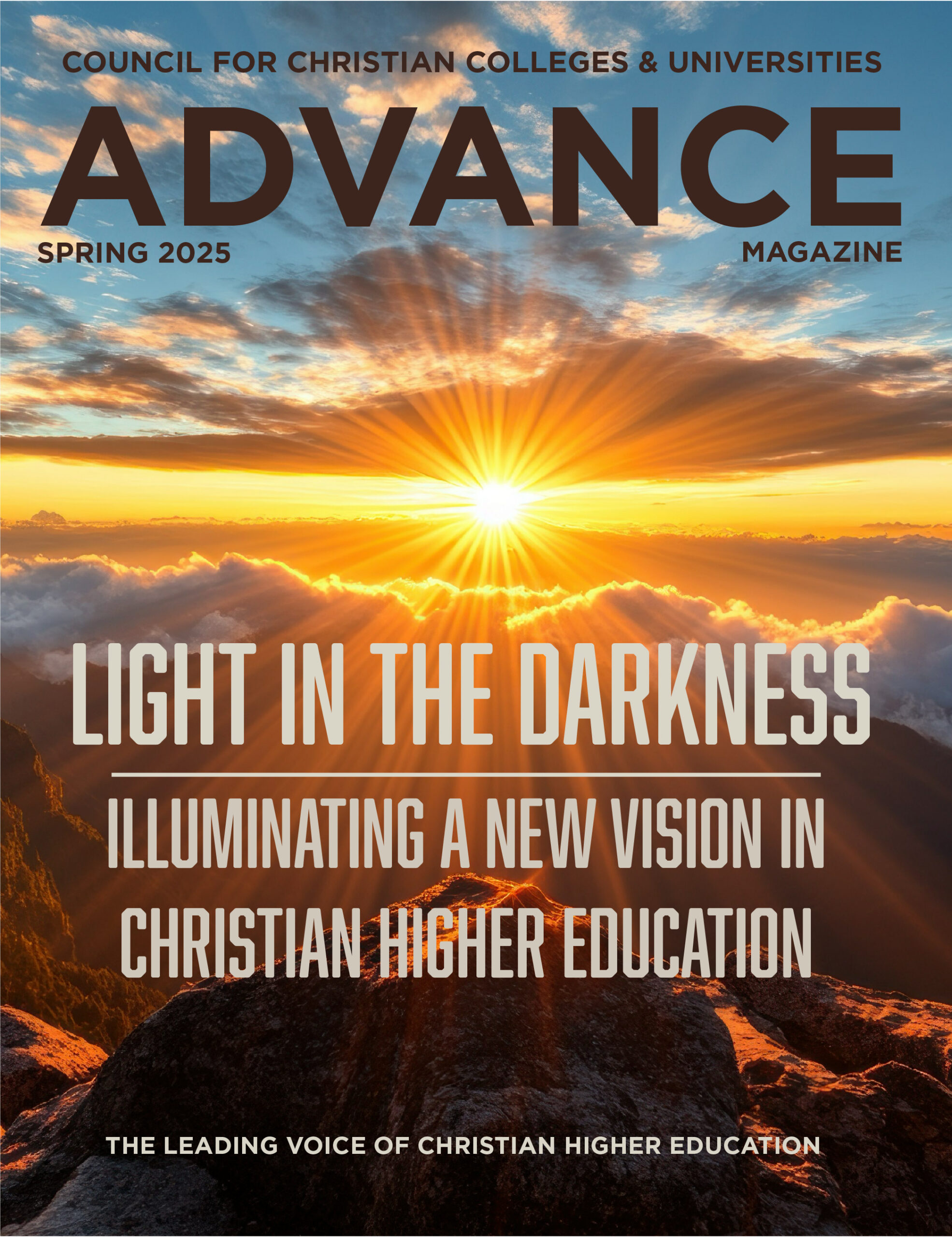Magazine
When it comes to providing our students a foundation and understanding of the integration of faith with their studies, I suspect many of us can produce lists of unsatisfactory endeavors.
In the collective experience of Christian higher education, we’ve witnessed insufficient or even fallacious attempts at this. To name just a few: ‘God of the gaps’ explanations; nationalistic histories that presume God was with one nation or another; the idea of manifest destiny imparting divine providence and privileged place into contemporary or recent events; simple prayers or out-of-context Bible verses replacing the hard craft and conceptual rigor required to do integration well.
Many of these insufficient means share several inclinations. Some are shaped by formulaic reconstructions of biblical mandates or pietistic framings of the concerns. At other times, faith integration has been confused with apologetics or biblical study. These are of course valuable activities and to be sought as part of a maturing Christian life, but they are not the same as developing the ability to integrate faith and learning well.
Integration cannot be formulaic, nor is it reducible to or identifiable with a simple prayer or a Bible lesson. Neither can it be what is perhaps more tempting and readily found: an attempt to supply a neat biblical overlay to the academic material. Nor does it amount to a singular theological or credal assessment; otherwise, seminaries and divinity schools would be the main locus of such work.
Critically, many of our able students recognize that such approaches are insufficient. In my experience, these sorts of approaches often become the point of rejection for Christian thought. When bright and able students progress in their training (whether through continued academic education or through career experience), the answers they thought they had based on such formulaic responses can prove insufficient; thus, the Christian faith can suddenly seem to them as insufficient for the so-called “real world” of their chosen vocation.
When one looks at the broad array of works on integration, the liberal arts colleges represent a major source of such output. This should not be surprising when considering the history of integrative conversations. Modern notions evolved out of our medieval predecessors, whose focus on the integration of faith and reason sets our stage — where theology engaged seriously with the predecessor to the modern liberal arts, the quadrivium and trivium.
Integration requires clear critical thinking, and the maturing of critical analysis is especially served well by developing interdisciplinary thinking. However, in the relatively siloed world of modern higher education, we are often biased against interdisciplinarity for a variety of reasons. When considered singularly, many of these reasons can be justified, but this bias undermines the project of higher education when looked at as a cohesive whole. Among the reasons often given for academic siloes are lack of time (interdisciplinarity, after all, is a long game requiring the investment of time); the expectations of specialized excellence according to particular disciplinary canons; budgetary constraints undermining the opportunities for interdepartmental, team-taught courses; the constraints imposed by accreditation bodies; and narrow, prior experience (to name a few).
But faith-learning integration needs the benefits of many disciplinary minds: theologians, historians, chemists, psychologists, literary scholars, modern language scholars, engineers, business scholars, anthropologists, political scientists, and the like all need each other, and our understanding of our work is enhanced by making deep connections between the people, the ideas, and the experiences. We might apply Rudyard Kipling’s classic statement from his 1891 poem, “The English Flag,” about the need to travel outside of one’s own land for scholarly integration: “What do they know of England who only England know?” These salutary words are as true for intellectual boundaries as for political and geographic ones. We must bridge other disciplinary cultures if we want integration to flourish.
But how to do it in our siloed academic worlds? Interdisciplinary training for students is an antidote, as it includes skilled, integrated teaching across the broad range of subjects. Programs such as honors and some forms of undergraduate research specifically draw upon interdisciplinary approaches alongside travel, study abroad, and team-taught courses that nurture integrating one or more disciplines.
All of these, to flourish well, require institutions to facilitate formative experiences for the faculty that press them to develop interdisciplinary commitments and vision of their own. For example, faculty gatherings that encourage the members to delve deeply into a concept, problem, or issue while bringing their various disciplinary strengths to bear can accomplish much for them, your institutions, and the student experience.
Interdisciplinarity provides the intellectual tools to build bridges between conceptual frameworks, shapes one’s ability to expand beyond one’s own narrower horizons, and prepares one to do the work of integration — bridging faith and academic work to provide an approach that encompasses the entire self. All involved in the process — students, faculty, and administrators alike — enhance their ability to make use of rigorous intellectual methods, culturally sensitive commitments, and spiritually enlivening practices in a way that reflects the life and mission of Jesus Christ. In other words, interdisciplinarity enables institutions to truly provide the Christ-centered educational experience for which they strive.
Stanley P. Rosenberg is the CCCU’s vice president for research and scholarship and the executive director of SCIO: Scholarship & Christianity in Oxford, the CCCU’s U.K. subsidiary.




